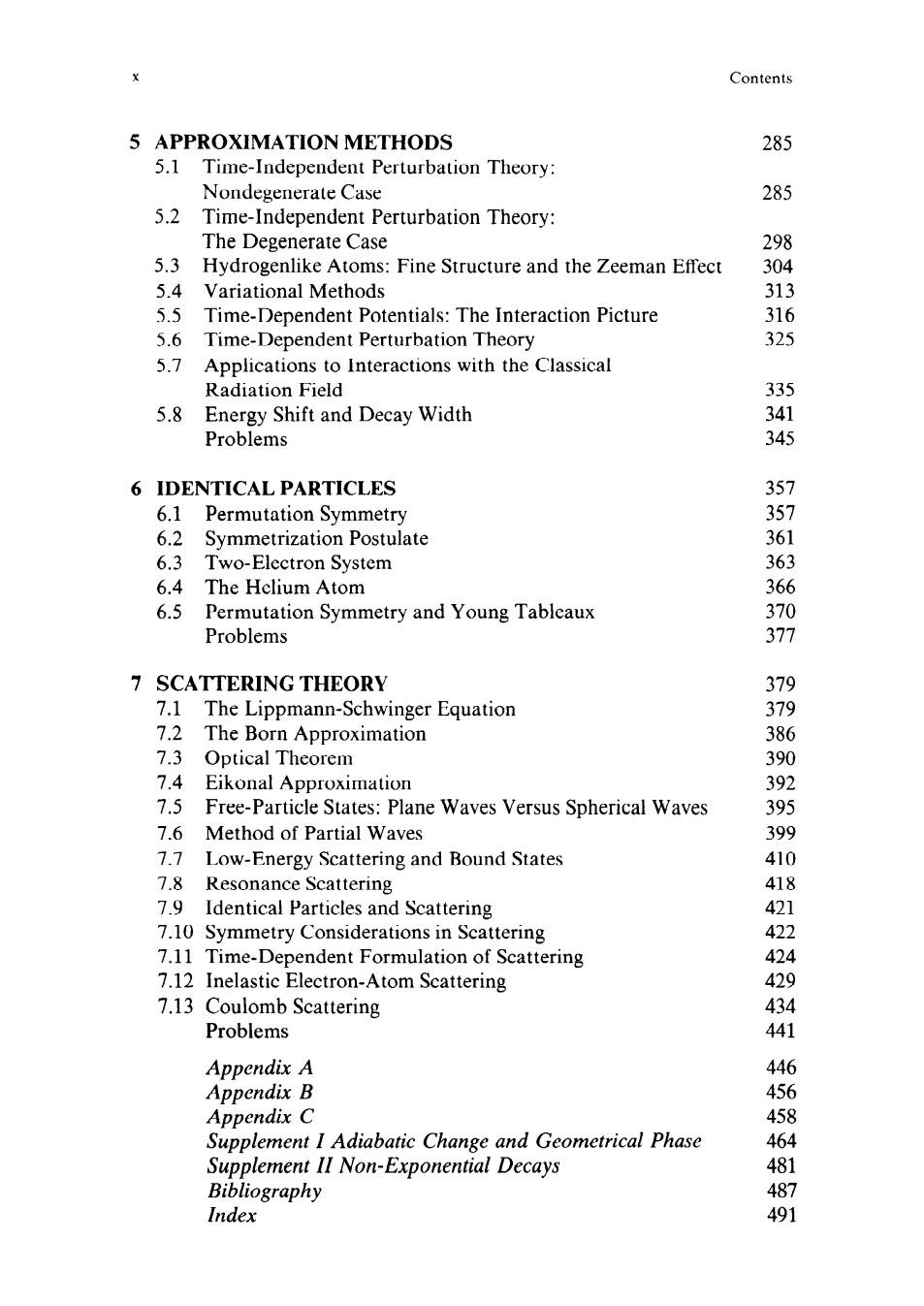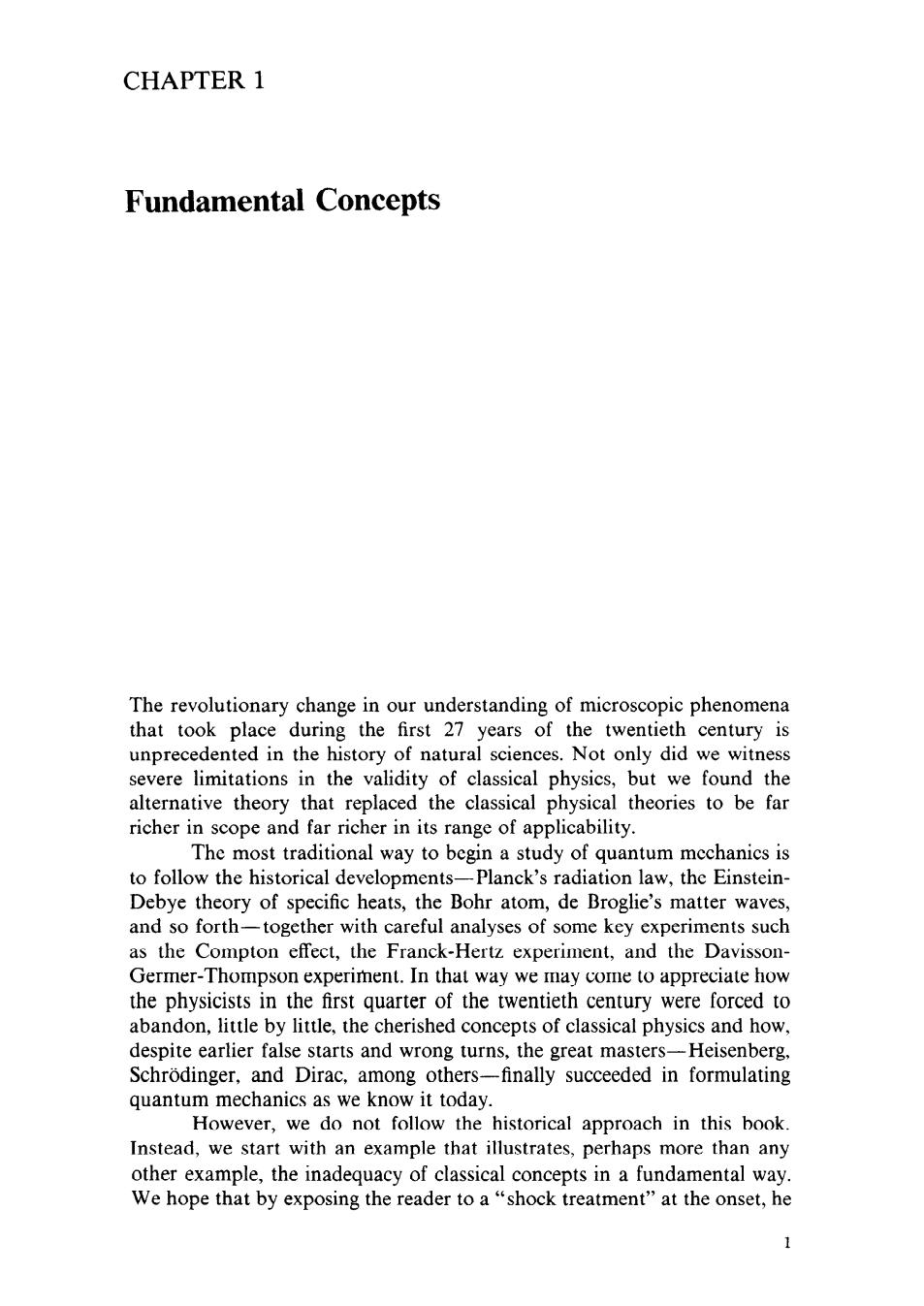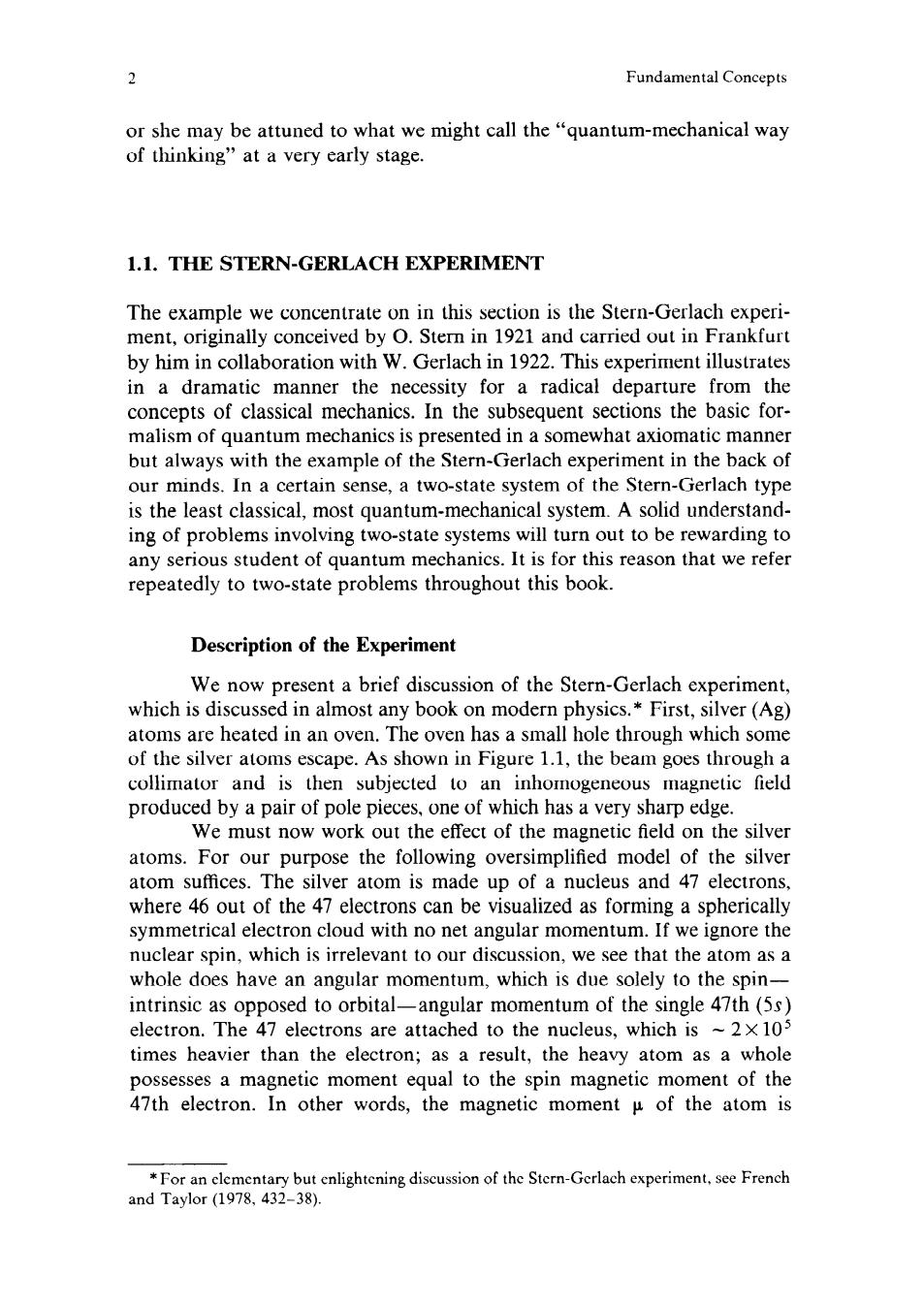
viⅷ In Memoriam much more general sense,as his heart was always close to experimental activities. I knew Jun John for more than 25 years,and I had the greatest admiration not only for his immense also for the himself at Cornell during 1957-1958,he took time from his own pioneering research in K-nucleon dispersion relations to help me (via extensive corre- spondence)with my Ph.D.thesis on the same subject at Berkeley.Both Sandip Pakvasa and I were privileged to be associated with one of his last papers on weak couplings of heavy quarks,which displayed once more his infectious and intuitive style of doing physics.It is of course gratifying to us in retrospect that Jun John counted this paper among the score of his published works that he particularly enjoyed. The physics community suffered a great loss at Jun John Sakurai's death.The personal sense of loss is a severe one for me.Hence I am profoundly thankful for the opportunity to edit and complete his manuscript on Modern Quantum Mechanics for publication.In my faith no greater gift an opp ortunity to show my respect and love for San Fu Tuan

Contents Foreword Preface In Memoriam 1 FUNDAMENTAL CONCEPIS 1 1.3 Base Kets and Matrix Representations 1.4 Measurements,Observables,and the Uncertainty Relations 10723 15 Change of Basis 36 Positio n,Momentu and Translation 41 Wave Functions in Position and Momentum Space 1 Problems 60 2 QUANTUM DYNAMICS 6 2.1 Time Evolution and the Schrodinger Equation 68 2.2 The Schrodinger Versus the Heisenberg Picture 2.3 Simple Iarmonic Oscillator 2.4 Schrodinger's Wave Equation 97 2.5 Propagators and Feynman Path Integrals 2.6 Potentials and Gauge Transformations 193 Problems 143 3 THEORY OF ANGULAR MOMENTUM 3.1 Rotations and Angular Momentum Commutation Relations 3.2 Spin 1/2 Systems and Finite Rotations 12555 3.3 SO(3),SU(2),and Euler Rotations 168 3.4 Density Operators and Pure Versus Mixed Ensembles 174 Eigenvalues and Eigenstates of Angular Momentum 3.6 Orbital Angular Momentum 3.7 Addition of Angular Momenta 203 3.8 Schwinger's Oscillator Model of Angular Momentum 217 30 Spin Co relation Measurements and Bell's Inequality ))? 3.10 Tensor Operators 232 Problems 242 4 SYMMETRY IN QUANTUM MECHANICS 4.1 Symmetries,Conservation Laws,and Degeneracies 4.2 Discrete Symmetries,Parity,or Space Inversion 251 4.3 Lattice Translation as a Discrete Symmetry 261 44 The Time-Reversal Discrete Symmetry 266 Problems 282 4

Contents 5 APPROXIMATION METHODS 285 5.1 Time-Independent Perturbation Theory: Nondegenerate case 285 5.2 Time-Independent Perturbation Theory The Degenerate Case 298 5.3 Hydrogenlike Atoms:Fine Structure and the Zeeman Effect 304 54 Variational Methods 313 55 Time-Dependent Potentials:The Interaction Picture 316 5.6 Time-Dependent Perturbation Theory 325 5.7 Applications to Interactions with the Classical Radiation Field 335 341 345 6 IDENTICAL PARTICLES 357 357 Symn 8 6.4 The Helium Atom 366 6.5 Permutation Symmetry and Young Tableaux 370 Problems 377 7 SCATTERING THEORY 379 7.1 The Lippmann-Schwinger Equation 379 7.2 The Born Approximation 386 7.3 Optical Thec em 390 74 Eikonal Approximation 7.5 Free-Particle States:Plane Waves Versus Spherical Waves 395 7.6 Method of Partial Waves 399 77 Low-Energy Scattering and Bound States 7.8 Resonance Scattering 418 7.9 Identical Particles and Scattering 42 7.10 Symmetry Considerations in Scattering 422 7.11 Time-Dependent Formulation of Scattering 424 7.12 Inelastic Electron-Atom Scattering 7.13 Coulomb Scattering Problems 441 Appendix B Appendix C Supplement I Adiabatic Change and Geometrical Phase Supplement II Non-Exponential Decays 481 graphy 487 Index 491

CHAPTER 1 Fundamental Concepts The revolutionary change in our understanding of microscopic phenomena that took place during the first 27 years of the twentieth century is unprecedented in the history of natural sciences.Not only did we witness severe limitations in the validity of classical physics,but we found the ernative theory that replaced the classical physic al theories to be far richer in scope and far richer in its range of applicability. The most traditional way to begin a study of quantum mechanics is to follow the historical developments-Planck's radiation law,the Einstein- Debye thec ry of sp cific heats,the Bohr atom ,de Broglie's matter wave and so forth-together with careful analyses of some key experiments such as the Compton effect,the Franck-Hertz experiment,and the Davisson- Germer-Thompson experiment.In that way we may come to appreciate how the physicists in the first quarter of the twentieth century were forced to abandon,little by little,the cherished concepts of classical physics and how despite earlier false starts and wrong turns,the great masters-Heisenberg. Schrodinger,and Dirac,among others-finally succeeded in formulating quantum mechanics as we know it todav. ever,we do not follow the historical approach in this book Instead,we start with an example that illustrates,perhaps more than any other example,the inadequacy of classical concepts in a fundamental way. We hope that by exposing the reader to a"shock treatment"at the onset,he

2 Fundamental Concepts or she may be attuned to what we might call the"quantum-mcchanical way of thinking"at a very early stage. 1.1.THE STERN-GERLACH EXPERIMENT The example we concentrate on in this section is the Stern-Gerlach experi- ment,originally conceived by O.Stern in 1921 and carried out in Frankfurt by him in collaboration with W.Gerlach in 1922.This experiment illustrate in a dramatic manner the necessity for a radical departure from the concepts of classical mechanics.In the subsequent sections the basic for- malism of quantum mechanics is presented in a somewhat axiomatic manner but alway vith the example of the Stern-Gerlach experiment in the back of our minds.In a certain sense,a two-state system of the Stern-Gerlach type is the least classical,most quantum-mechanical system.A solid understand- ing of problems involving two-state systems will turn out to be rewarding to any serious student of qua m mecha nics.It is for this reason that we refer repeatedly to two-state problems throughout this book Description of the Experiment We now present a brief discussion of the Stern-Gerlach experiment which is discussed in almost any book on modern physics.*First,silver(Ag) atoms are heated in an oven.The oven has a small hole through which some of the silver As sho re 1.1,the beam goes through a collimato and is then subjected to an nhomogeneous magnetic field produced by a pair of pole pieces.one of which has a very sharp edge. We must now work out the effect of the magnetic field on the silver atoms.For our purpose the following oversimplified model of the silver atom suffices.The atom is made e up of nucleus and 47 electron where 46 out of the 47 electrons can be visualized as forming a spherically symmetrical electron cloud with no net angular momentum.If we ignore the nuclear spin,which is irrelevant to our discussion,we see that the atom as a whole does have an angular momentum,which is due solely to the spin- intrinsic as opposed to orbital-angular momentum of the single 47th(5s electron.The 47 electrons are attached to the nucleus,which is ~2x 10 times heavier than the electron:as a result.the heavy atom as a whole possesses a magnetic moment equal to the spin magnetic moment of the 47h electron.In other words,the magnetic moment of the atom is *For an elen and Taylor (1978,432-38). y but enlightening discussion of the Stern-Gerlach experiment.see French